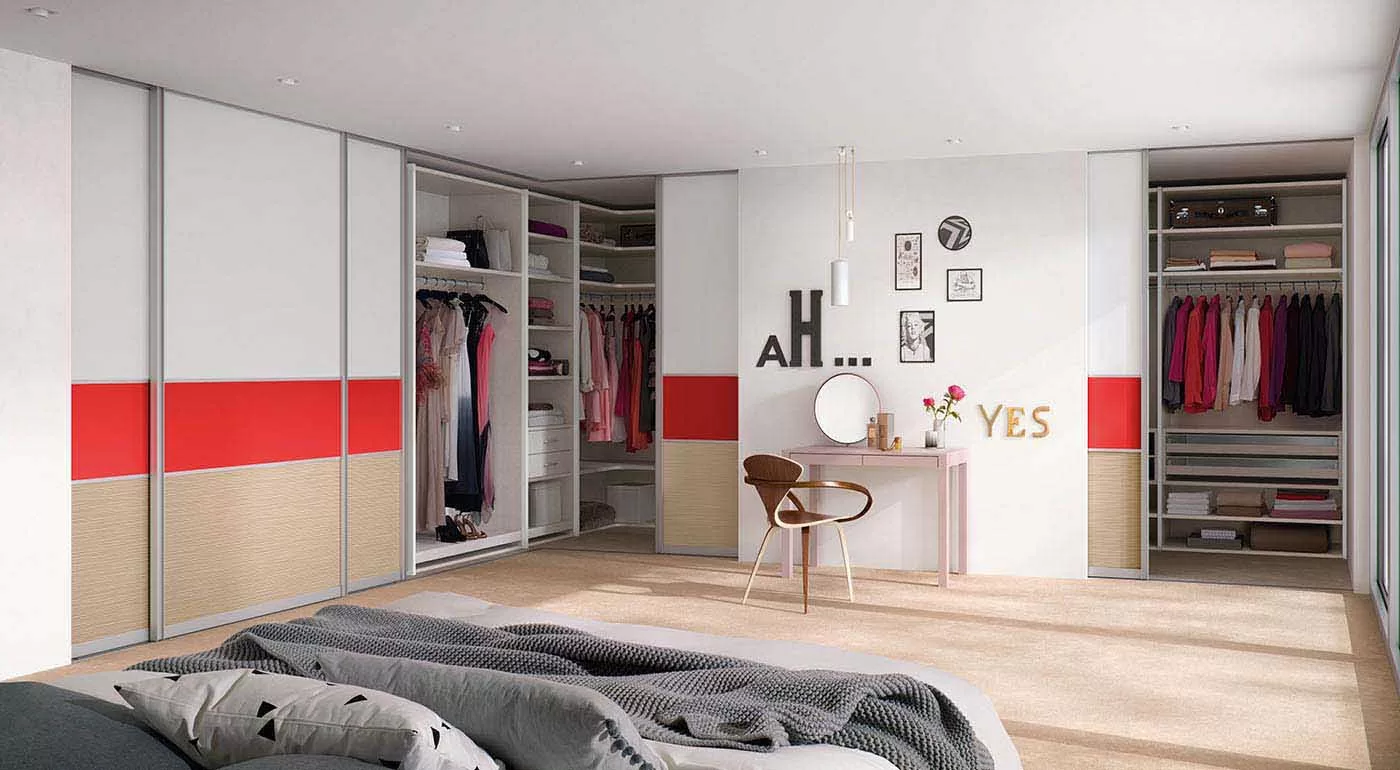The Pros and Cons of Hinged Wardrobe Doors vs Sliding Wardrobe Doors

Closets come in varied designs ranging from standalone units to wall-fitted wardrobes. Moreover, the door design is central to the overall look of the piece and its functionality. There are primarily two common designs: hinged doors and sliding wardrobe doors. Here is a closer look at what each option has to offer.

Hinged Wardrobe Doors
The hinged door design is a traditional option that features two or three door hinges attached to the frame of the closet. The doors swing open across the hinges hence the alternate name, swinging door wardrobes.
The Pros
Accessibility: Hinged doors provide easy access to wardrobe spaces. You can reach and see all your belongings at once with no obstructions.
Sturdiness: Hinged doors are more sturdy and durable than sliding doors. The door panels are mounted on metallic hinges that open outwards, reducing the risk of misalignment or frictional damage. The incredible performance makes it a go-to design for many interior designers.
Design versatility: The hinged wardrobe design welcomes a wide range of styles, materials, and finishes. As a result, you have access to more design options to match your taste and the aesthetics of your bedroom.
Full mirror option: Mirrors are central to the design of a wardrobe. The hinged doors can accommodate full-length mirrors seamlessly, providing a convenient dressing experience. Furthermore, the mirrors can be fitted on either face of the door panels.
The cons
Space requirement: The swinging function of hinged doors needs clearance. Therefore, the design may not be suitable for tight spaces where the swing clearance is limited.
Limited floor space utilisation: The swing clearance in front of closets creates a dead space in the room. As a result, you have restricted movement across the floor space and the usable area is reduced.
Potential obstructions: Hinged door wardrobes can get in the way of other furniture pieces. The swing clearance can obstruct other pieces or limit the use of the wardrobe.
Sliding Wardrobe Doors
Sliding doors are a contemporary design for closets. The doors are fitted along a track that guides the panels while opening and closing.
The Pros
Space-saving: Sliding door closets require minimal floor space as the door panels glide horizontally along a track. There is no need for a swing clearance making the design ideal for smaller rooms.
Visual appeal: Sliding wardrobe doors create a seamless, contemporary look that can match several interior design options. The aesthetic appeal is also unique.
Unobstructed access: Since sliding doors open along a horizontal track, you can use the wardrobe while standing in front of it. This offers unobstructed access.
Customisation options: Sliding door closets are available in various finishes and configurations. As a result, you can match your interior design preferences.
The cons
Limited access: Sliding doors only allow you to access one section of the wardrobe at a time. This can be inconvenient if you want to view or access all your belongings simultaneously.
Maintenance: Sliding doors operate on tracks and rollers, which accumulate dirt, dust, and debris. Therefore, regular cleaning and maintenance are necessary to ensure smooth function.
Potential alignment issues: Poorly installed sliding doors become misaligned, making it difficult to open or close them. This can be a big nuisance for users.
Weight limitations: The track system on sliding door closets has a weight limit. Therefore, the track can limit your choice of materials and door design owing to the weight allowance.
Ultimately, the choice between hinged and sliding wardrobe doors depends on your specific needs, available space, design preference and other personal preferences, including accessibility, durability, and functionality.










